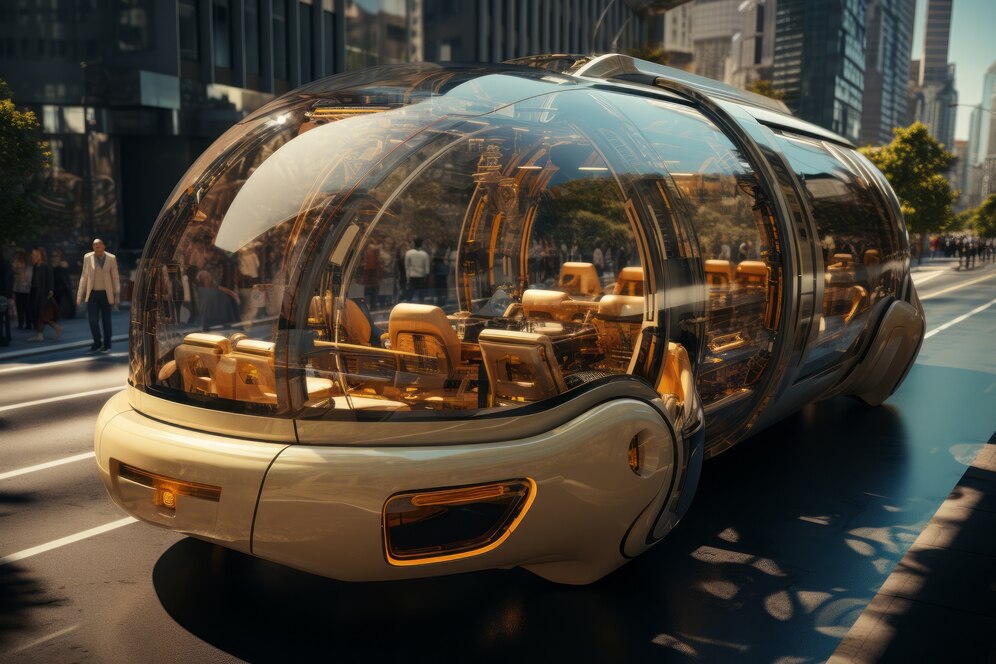Table of contents
The Future of Transportation is undergoing a seismic shift, driven by advances in clean energy, automation, and high-speed innovation. From electric vehicles (EVs) reshaping our streets to autonomous driving systems navigating our highways, and futuristic Hyperloop systems promising near-supersonic travel, the next decade of transportation promises to be cleaner, smarter, and faster.
In this post, we dive into the major technological trends that are transforming how we move—and how these innovations will redefine urban planning, environmental policy, and everyday life.
1. Electric Vehicles: Powering the Green Revolution
Electric vehicles are at the forefront of the Future of Transportation, aiming to replace internal combustion engines with clean, electric power.
🚗 Key Drivers of EV Growth:
- Sustainability: EVs reduce greenhouse gas emissions and dependence on fossil fuels.
- Affordability: Falling battery prices are making EVs more accessible.
- Government Incentives: Tax credits, rebates, and low-emission zones are accelerating adoption.
- Infrastructure Expansion: More public charging stations are appearing worldwide.
🔋 Battery Technology:
Advancements in lithium-ion and solid-state batteries are increasing range and reducing charge time—two major hurdles for mass adoption.
🔄 Regenerative Braking:
Modern EVs utilize regenerative braking, allowing cars to recover energy during deceleration, improving overall efficiency.
Popular models like Tesla Model 3, Ford Mustang Mach-E, and the Nissan Leaf are helping make electric transportation mainstream.
2. Autonomous Driving: A Smarter Way to Commute
Self-driving cars, once a science fiction fantasy, are rapidly becoming a reality thanks to breakthroughs in AI, machine learning, and sensor technology.
🚘 Levels of Autonomy:
- Level 1–2: Driver-assist systems like adaptive cruise control.
- Level 3: Conditional automation under specific scenarios.
- Level 4–5: Fully autonomous vehicles with little to no human input.
Companies like Tesla, Waymo, and Cruise are racing toward full autonomy, testing vehicles in real-world conditions across major cities.
🌐 How It Works:
Autonomous vehicles use:
- Lidar and radar sensors
- Cameras for 360° vision
- AI-powered decision-making
- Real-time data processing
🧠 Benefits:
- Reduces traffic accidents caused by human error
- Improves traffic flow and fuel efficiency
- Increases mobility for elderly and disabled populations
While regulation and safety concerns remain, autonomous driving is a pillar of the Future of Transportation.
3. Hyperloop: The Ultra-Fast Future
The Hyperloop—a proposed mode of transportation using pressurized capsules inside low-pressure tubes—could redefine long-distance travel.
🚄 What Makes Hyperloop Revolutionary?
- Speeds of 600+ mph (965+ km/h)
- Minimal energy consumption
- No direct emissions
- Reduced congestion on highways and railways
Developers like Virgin Hyperloop and Elon Musk’s Boring Company are actively testing prototypes. Routes between major cities, such as Los Angeles to San Francisco or Dubai to Abu Dhabi, could be completed in under 30 minutes.
🏗️ Challenges:
- High infrastructure costs
- Regulatory hurdles
- Public acceptance
- Safety standards
Despite the obstacles, Hyperloop represents the cutting edge of the Future of Transportation—blending engineering marvels with sustainable ambitions.
4. The Environmental and Social Impact
The shift toward electric and autonomous transportation isn’t just about technology—it’s about transforming society.
🌱 Environmental Benefits:
- Significant reduction in carbon emissions
- Decreased noise pollution
- Cleaner cities
🧑🤝🧑 Social Impacts:
- Improved accessibility and mobility
- Reshaped urban planning with fewer parking requirements
- Potential job shifts in logistics, trucking, and driving services
Governments and industries must work together to ensure the Future of Transportation is inclusive, ethical, and environmentally responsible.
5. Smart Cities and Mobility-as-a-Service (MaaS)
The integration of transportation technologies is giving rise to smart cities, where data-driven mobility services improve efficiency and convenience.
🏙️ Features of Smart Urban Mobility:
- Real-time transit updates
- Seamless connections between transport modes
- Ridesharing and micro-mobility (e-scooters, bikes)
- Congestion pricing to reduce traffic
Mobility-as-a-Service (MaaS) allows users to plan, book, and pay for multiple types of transport through a single digital platform. This system empowers users to choose the fastest, cheapest, or most eco-friendly options on demand.
FAQs About the Future of Transportation

Electric vehicles, autonomous driving, Hyperloop systems, smart infrastructure, and Mobility-as-a-Service (MaaS) are the major trends.
Yes. EVs have zero tailpipe emissions and a lower carbon footprint over their lifetime, especially when powered by renewable energy.
Level 4 autonomous vehicles are expected to be more common by 2030, depending on regulatory approval and public trust.
Commercial Hyperloop travel is still in the experimental phase but may be available in select locations by the late 2030s.
Infrastructure investment, regulation, cybersecurity, and public trust are key challenges that need to be addressed for widespread adoption.
Final Thoughts
The Future of Transportation is an exciting convergence of sustainability, automation, and innovation. Electric vehicles are reshaping the auto industry, autonomous driving is making commuting smarter and safer, and Hyperloop promises to redefine how we connect across great distances.
As these technologies evolve, so too will our cities, lifestyles, and global economy. Embracing these changes today means creating a cleaner, more connected, and efficient tomorrow.





